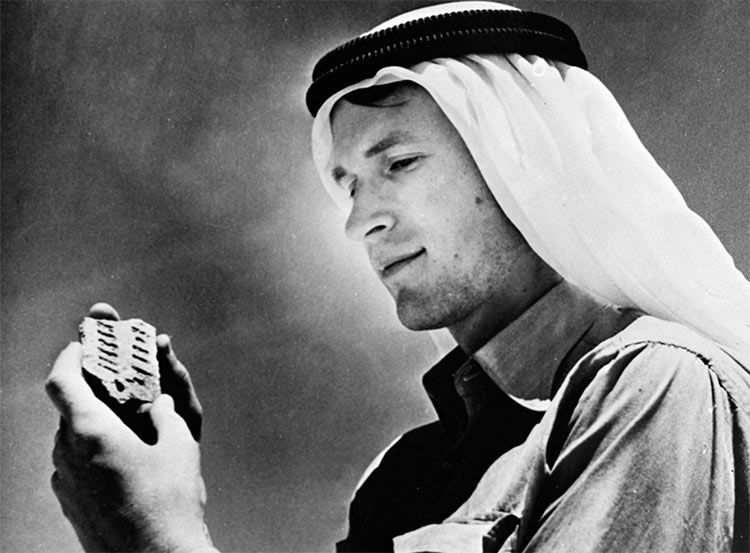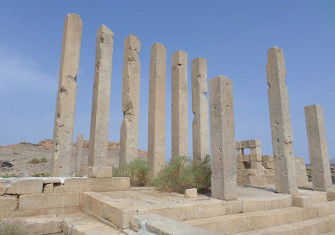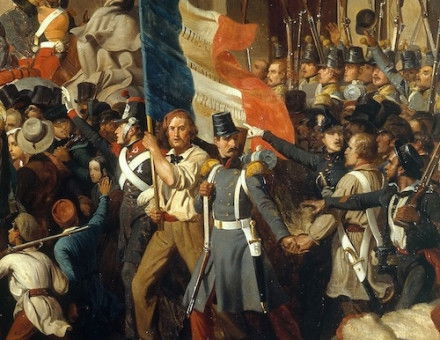America’s ‘Lawrence of Arabia’
Wendell Phillips is not remembered fondly in Yemen.

Arabia Felix, or ‘Happy Arabia’, as the Romans called what is now Yemen, has always attracted explorers, despite being – or perhaps because it was – one of the most inaccessible places in the Near East. The last explorer to enter Yemen did so 65 years ago and, following that experience, it has, for the large part, remained inaccessible ever since.
As early as the 1760s, a Danish expedition crossed the country – Carsten Niebuhr was its only survivor, all the others falling prey to malaria. But it was only after the Austrian Ulrich Seetzen copied the first ancient South Arabian inscriptions at Dhafar in 1810 that western explorers really became fascinated by the region’s history. In the course of the 19th century, the Britons Charles Cruttenden and J.R. Wellsted, both officers of the East India Company, the Frenchmen Thomas Arnaud and Joseph Halévy and the Austrian Eduard Glaser all journeyed to Yemen in search of ancient ruins and inscriptions. Getting into and travelling around the country was no easy task and many a time they had to travel in disguise or fear for their lives among the suspicious tribes. Although they all made greater or smaller discoveries, thorough studies were always unattainable.
In 1927, two Germans were invited by the ruling Imam to excavate the remains of a Sabaean temple in Huqqa, near Sana’a. This was the first excavation ever carried out in Yemen. For Wendell Phillips, a young American who can be considered the last of the great explorers, the ultimate goal was Marib, the city of the legendary Queen of Sheba. ‘The land looked forbidding’, he would later write in his book Qataban and Sheba (1955), ‘but it was rich with the spoils of time, and I wanted to unearth some of those riches, digging down through sand and centuries to a glorious past.’
After unexpectedly having procured permission to excavate at Marib from Imam Ahmed, who usually kept foreigners out of his country, Phillips immediately stopped excavations at the Qatbanian city of Timna in British-ruled territory, where his team had been working for two seasons. Here, they had uncovered parts of the city and a nearby graveyard and in the process unearthed a great number of inscriptions, statues and other artefacts, all of which were sent home to the US.
The expedition to Marib was, however, doomed to fail from the beginning. Phillips soon became aware of the hostility of the local populace to the project and they were taken prisoner for a night. The huge scale of the expedition and the disproportionate work demands from Phillips did not help to smooth relations. Among other things, he asked for a road to be laid out to move their heavy equipment (including motor maintenance equipment, food supplies, power plants, hospital units, photographic equipment, refrigerators, radios and typewriters). Once work started, another road was needed to bring in supplies and equipment from the Red Sea port of al-Hudeidah. He wanted a field to be cleared somewhere near Marib for landing aeroplanes and, finally, proper headquarters and storing facilities had to be built for the expedition.
Considering that most inhabitants of Marib had never seen a foreigner, nor a car or a refrigerator, it was no wonder that all this appeared to them to be ‘an invasion’ rather than an archaeological expedition.
Work began anyway, while Phillips himself went back to the US to take care of funds. Tons of sand were removed from the Awwam Temple, or Mahram Bilquis, the largest and most important temple of the Sabaeans, which was in use for at least 1,200 years before Islam. Over the course of the period between November 1951 and February 1952, a great portion of the entrance court – the so-called Peristyle Hall – was excavated, as well as a small part of the oval temple enclosure and a mausoleum just outside the oval wall.
Albert Jamme, the expedition’s epigraphist, saw a proverbial goldmine of inscriptions in front of him. He, too, missed the opportunity to establish friendly relations with the locals. One of the supervisors sent by the Yemeni government was Zaid Inan, who was greatly interested in his country’s history and in the process of writing a book on the subject. He expressed the hope that the expedition’s discoveries would help him complete his manuscript and asked Jamme to teach him about the old Sabaean language found on the inscriptions. Had the epigraphist been more willing to share his knowledge, Inan might have supported the expedition, instead of deliberately frustrating its work. But all Jamme had to say was that he had come to Marib to study inscriptions and not to teach languages – and he went on to work in silence.
The Yemenis must have feared that their treasures were in danger of disappearing. This was only reasonable in light of the vast quantity of artefacts that had been taken away from Timna. Inan insisted on holding the key to the storeroom, which enraged the expedition members.
When Phillips finally came back early in February 1952, the situation had become so tense that they could only think of escaping, which they did soon after.
In spite of the failure of the expedition, some great results were achieved. For the first time, tangible proof of a significant Sabaean architectural complex had come to light. Jamme compiled an extensive epigraphic work, Sabaean Inscriptions From Mahram Bilqis (Marib) (1962), which is still used by scholars today.
Maybe Phillips should have taken heed of a remark expressed by the Imam’s secretary when he said: ‘I fully realise that Yemen is a backward country, but changes must be inflicted gradually. If a man swallows a big dose of poison he will have drastic results, but if he takes it a little at a time, the chances are he will survive.’
After the negative experience of the whole endeavour, including the collapse of several columns in the temple and Phillips’ failure to pay the workers in full, the country stayed closed to archaeological research for 25 years. By that time, the era of explorers was over. Still, Phillips’ undertaking was not forgotten and his name is remembered among the Yemenis: ‘He came to steal our treasures.’
Sarah Rijziger is a historian of pre-Islamic Yemen based in Sana’a.





